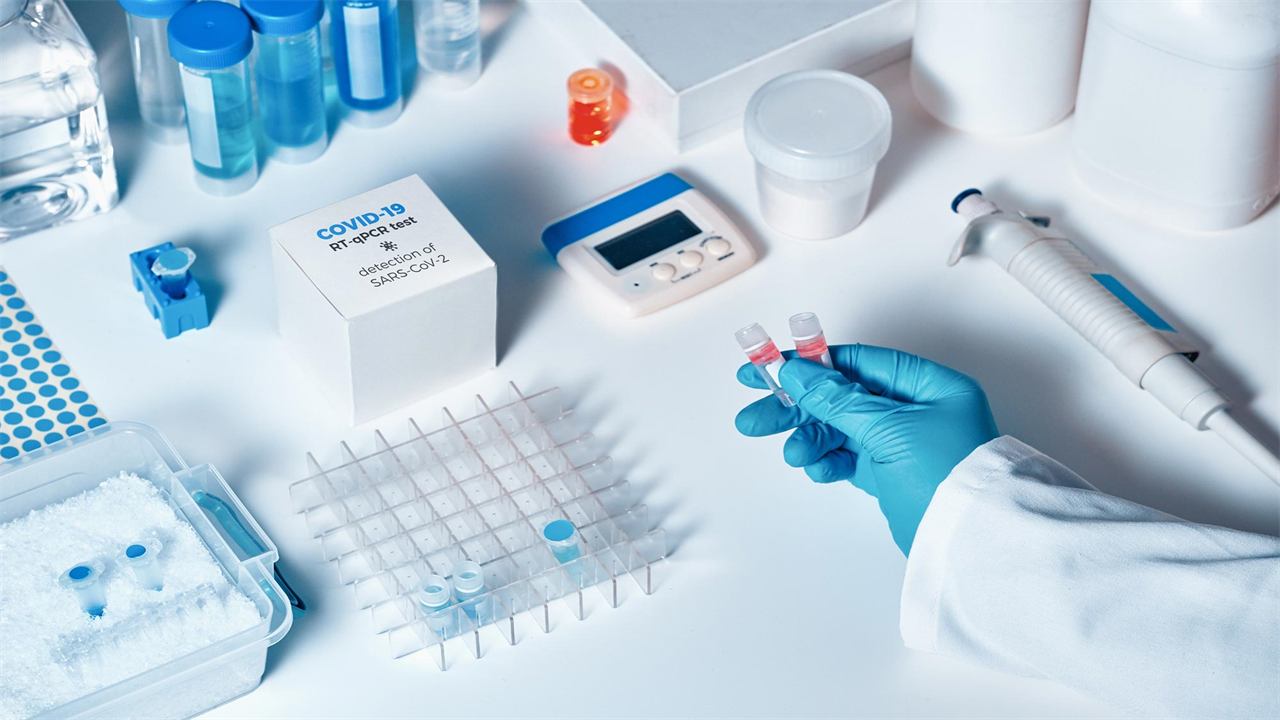NIH Scientists Develop Faster, Cheaper COVID-19 Test
0 View
Share this Video
- Publish Date:
- 17 August, 2021
- Category:
- Covid
- Video License
- Standard License
- Imported From:
- Youtube
Tags

Scientists at the National Institutes of Health (NIH) have developed a new sample preparation method to detect SARS-Cov-2, the virus that causes COVID-19. The method bypasses the extraction of the virus’s genetic RNA material, simplifying sample purification and potentially reducing testing time and costs. The method is the result of a collaboration between researchers from the National Eye Institute (NEI), the NIH Clinical Center (CC), and the National Institute of Dental and Craniofacial Research (NIDCR).
Diagnostic testing remains a critical tool in the fight against the COVID-19 pandemic. Standard assays for the detection of SARS-CoV-2 involve amplifying viral RNA to detectable levels using a technique called quantitative reverse transcription PCR (RT-qPCR). But first, the RNA must be extracted from the sample. Manufacturers of RNA extraction kits struggled to keep up with demand during the COVID-19 pandemic, hampering testing capacity worldwide. With the emergence of new virus variants, the need for better, faster tests is greater than ever.
A team led by Robert B. Hufnagel, MD, Ph.D., chief of the NEI Medical Genetics and Ophthalmic Genomic Unit, and Bin Guan, Ph.D., a fellow at NEI’s Ophthalmic Genomics Laboratory, used a chelating agent. made by the lab company Bio-Rad, called Chelex 100 resin, to store SARS-CoV-2 RNA in samples for detection by RT-qPCR.
“We used nasopharyngeal and saliva samples with different virion concentrations to evaluate whether they could be used for direct RNA detection,” said Guan, the lead author of a report on the technique, published this week in iScience. “The answer was yes, with a remarkably high sensitivity. In addition, this preparation inactivated the virus, making it safer for laboratory personnel to handle positive samples.”
Hufnagel’s team made their discovery by testing a variety of chemicals using synthetic and human samples to identify those that could preserve the RNA in samples with minimal degradation, while allowing direct detection of the virus by RT-qPCR.
To validate the test, Blake M. Warner, DDS, Ph.D., MPH and his team at NIDCR collected patient samples (according to study protocol NIH IRB 20-D-0094) and stored them in viral transport media or the newly developed chelating resin. buffer at the NIH Symptomatic Testing Facility.
The viral transport media samples were tested by the COVID-19 testing team at the NIH’s Clinical Center, led by Karen M. Frank, MD, Ph.D., using conventional RNA extraction and RT-qPCR testing. The samples in the chelating buffer were heated and the viral RNA was then tested by RT-qPCR. The new preparation significantly increased the RNA yield available for testing, compared to the standard method.
“We think this new methodology has clear advantages of increased sensitivity, cost and time savings for testing,” said Hufnagel, “The method stabilizes the RNA at room temperature for easier transport, storage and handling in clinical settings.”
Reference: “Sensitive extraction-free SARS-CoV-2 RNA virus detection using a chelating resin” by Bin Guan, Karen M. Frank, José O. Maldonado, Margaret Beach, Eileen Pelayo, Blake M. Warner, and Robert B. Hufnagel, August 8, 2021, iScience.
DOI: 10.1016/j.isci.2021.102960
The work was supported by grant number 1ZIAEY000564-02.
About the National Eye Institute (NEI): NEI leads the federal government’s research on the visual system and eye diseases. NEI supports basic and clinical science programs to develop vision-saving treatments and meet the special needs of people with vision loss.
About the National Institute of Dental and Craniofacial Research (NIDCR): The mission of the National Institute of Dental and Craniofacial Research (NIDCR) is to improve dental, oral, and craniofacial health. As the largest funding organization for oral health research in the world, NIDCR does this by supporting a broad research portfolio, including basic, translational and clinical research in areas such as: cancer; the microbiome; immunology; HIV/AIDS; stem cells and regenerative medicine; genetics and rare diseases; and behavioral and social health inequalities.
About the NIH Clinical Center: The National Institutes of Health Clinical Center (CC), the US research hospital, is located on the NIH campus in Bethesda, Maryland. Through clinical research, clinician researchers translate lab discoveries into better treatments, therapies and interventions to improve the health of the country.
About the National Institutes of Health (NIH): NIH, the national medical research agency, includes 27 institutes and centers and is part of the United States Department of Health and Human Services. NIH is the primary federal agency that conducts and supports basic, clinical, and translational medical research, investigating the causes, treatments, and cures for both common and rare diseases.










